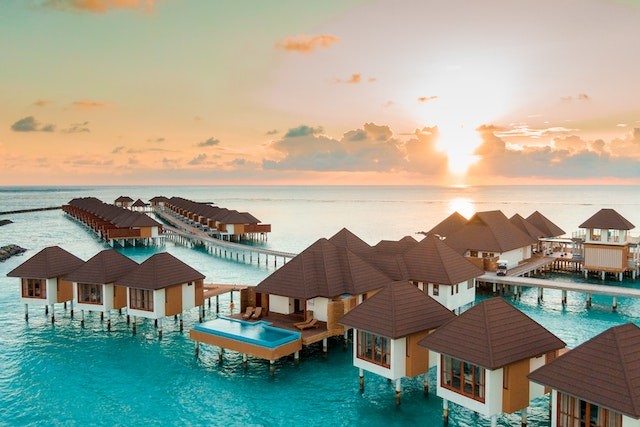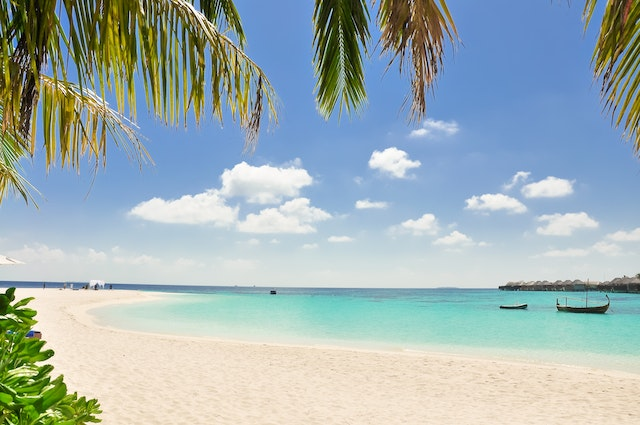Dreaming of heavenly beaches and crystal-clear waters? The Maldives are the ideal destination for you. Located in the Indian Ocean, this archipelago of 26 atolls comprising over 1,000 islands offers breathtaking scenery. But to make the most of your stay, it’s essential to choose the right time to leave. So when to leave for the Maldives to take advantage of the best weather conditions? This article will help you determine the best period according to your expectations and constraints.
Understanding the seasons in the Maldives
In the Maldives, there are two main seasons: the dry season and the rainy season. Each has its own advantages and disadvantages for travelers.
The dry season: between December and April
The dry season, also known as the season of the sun, generally runs from December to April. During this period, rainfall is less frequent and temperatures are pleasant, hovering between 25 and 30°C. The sun shines almost every day, offering sunny days and starry nights. This is the best time to enjoy the beach and water sports such as scuba diving and snorkeling.
February is often considered the best month to go to the Maldives, as it enjoys the most hours of sunshine and the mildest temperatures. The dry season is therefore ideal for travelers in search of sun and idleness on white sandy beaches.
The rainy season: May to November
May to November is the rainy season, also known as wind season. Rainfall is heavier, and winds blowing from the west can make the sea rough. Temperatures remain pleasant, however, with values between 25 and 30°C.
Despite these less favorable weather conditions, the rainy season still offers several advantages for travelers. First of all, prices for accommodation and flights are generally lower, due to fewer tourists. What’s more, the islands are greener thanks to regular rainfall, offering a magnificent natural spectacle. Last but not least, surf enthusiasts will be delighted during this period, as the waves are more powerful and the surf spots less crowded.
The rainy season can therefore be a good option for those looking for a low-cost vacation in the Maldives, making some concessions on sunny weather.

Events and festivities in the Maldives
Beyond the weather, it’s worth planning your trip around local events and festivities. The Maldives is a predominantly Muslim country, so the main celebrations are linked to the Islamic calendar.
Ramadan and Eid el-Fitr
Ramadan is the holy month of fasting for Muslims, and its date varies each year according to the lunar calendar. During this period, Maldivians abstain from eating and drinking from dawn until sunset. Restaurants and cafés may therefore be closed during the day, and the general atmosphere is calmer.
Ramadan ends with the Eid el-Fitr festival, which marks the breaking of the fast. This celebration lasts several days and is marked by prayers, festive meals and traditional dances. If you’d like to attend these festivities, check the Ramadan dates before booking your trip.
Independence Day
Every year on July 26, the Maldives celebrate their independence from the United Kingdom, gained in 1965. To mark the occasion, military parades, dance performances and fireworks are organized in the capital, Malé. This national holiday is an opportunity to discover Maldivian traditions and culture.
When to go to the Maldives: a question of priorities
In short, the best time to go to the Maldives will depend above all on your expectations in terms of weather, budget and cultural experiences. If you prefer sunshine and water sports, the dry season will undoubtedly be the best for you. On the other hand, if you’re prepared to put up with a few showers and want to take advantage of cheaper rates, the rainy season may also be a good option. Whatever you decide, the Maldives will provide you with an unforgettable stay and lasting memories.

